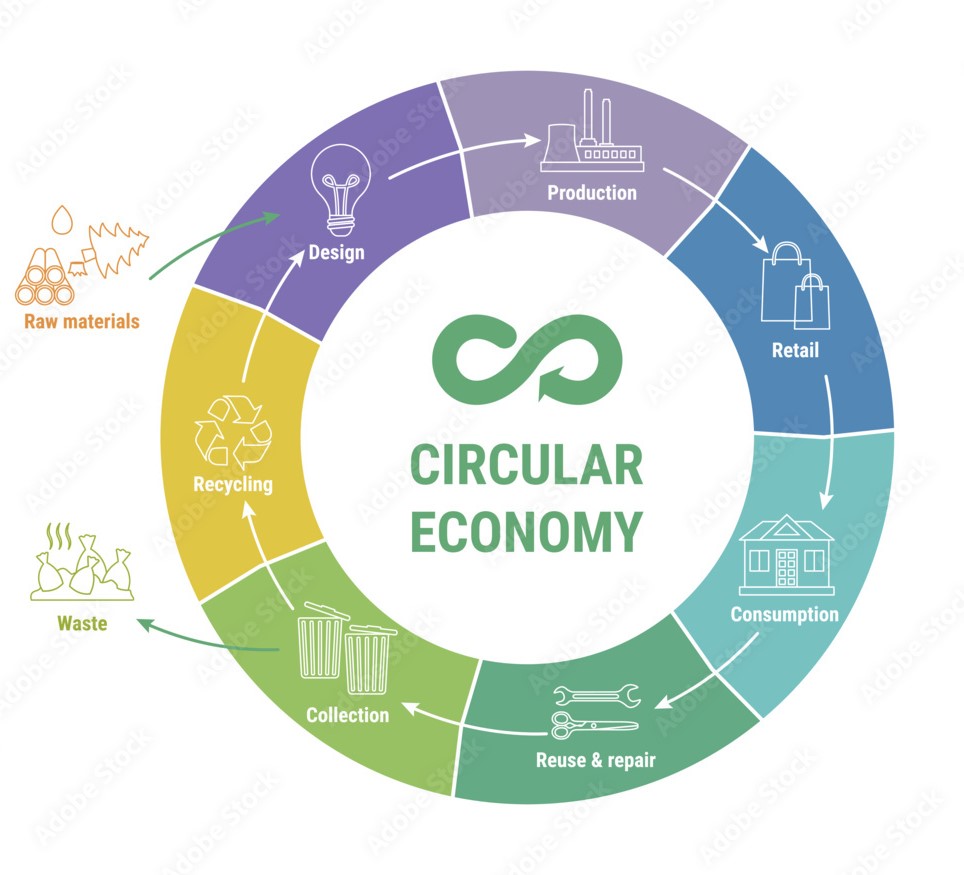Understanding the Circular Economy
The circular economy is a trans-formative model that re-imagines how we produce, consume, and manage resources. Unlike the traditional linear economy—where we take, make, and dispose—the circular economy is regenerative by design. It aims to keep products, materials, and resources in use for as long as possible, extracting maximum value before recovering and regenerating them at the end of their service life.
This approach reduces waste, lowers carbon emissions, and fosters innovation in product design, business models, and supply chains. It’s not just about recycling—it’s about redesigning entire systems to be more efficient, sustainable, and resilient. From fashion to electronics, construction to food systems, circularity is reshaping industries and offering a pathway to a low-carbon future.
The Role of the UK ICE SRM
The United Kingdom is home to the world’s first UN-backed International Centre of Excellence on Sustainable Resource Management in the Circular Economy (UK ICE SRM). This pioneering initiative brings together five leading institutions—University College London, University of Exeter, Brunel University London, Swansea University, and the British Geological Survey—to develop scalable circular economy solutions.
Supported by the United Nations Economic Commission for Europe (UNECE) and the UK Government, the centre focuses on sectors like metals, construction, and critical minerals. It builds on the success of the £30 million NICER programme, which accelerated circular economy research across the UK.
Key actions of the UK ICE SRM include:
- • Developing Digital Product Passports to improve transparency and traceability.
- • Advancing Extended Producer Responsibility policies to shift accountability to manufacturers.
- • Creating closed-loop supply chains that minimize waste and maximize resource recovery.
- • Mapping resource flows and carbon impacts through the Exeter Data Observatory.
- • Applying global frameworks like UNFC and UNRMS to standardize circular metrics.
The centre acts as a catalyst for sustainable development, helping countries transition to circular systems that protect natural capital and drive economic resilience.
Commonly asked Circular Economy FAQs.
What is the circular economy?
A system that designs out waste, keeps materials in use, and regenerates natural systems.
How is it different from recycling?
Recycling is one part of circularity; the circular economy also includes reuse, repair, remanufacturing, and redesign.
Why is the circular economy important?
It reduces environmental impact, conserves resources, and supports climate goals.
What is a closed-loop supply chain?
A supply chain where products are returned, reused, or recycled instead of discarded.
What is Extended Producer Responsibility (EPR)?
A policy that makes producers responsible for the lifecycle of their products, including disposal.
What is a Digital Product Passport?
A digital record detailing a product’s materials, origin, and environmental footprint.
How does circularity help decarbonisation?
By reducing resource extraction and waste, it lowers emissions across industries.
Which industries benefit most?
Construction, fashion, electronics, and food systems are major beneficiaries.
Is the circular economy economically viable?
Yes—studies show it can unlock trillions in economic value globally.
How can individuals contribute?
Buy less, choose durable products, repair, reuse, and support circular brands.



